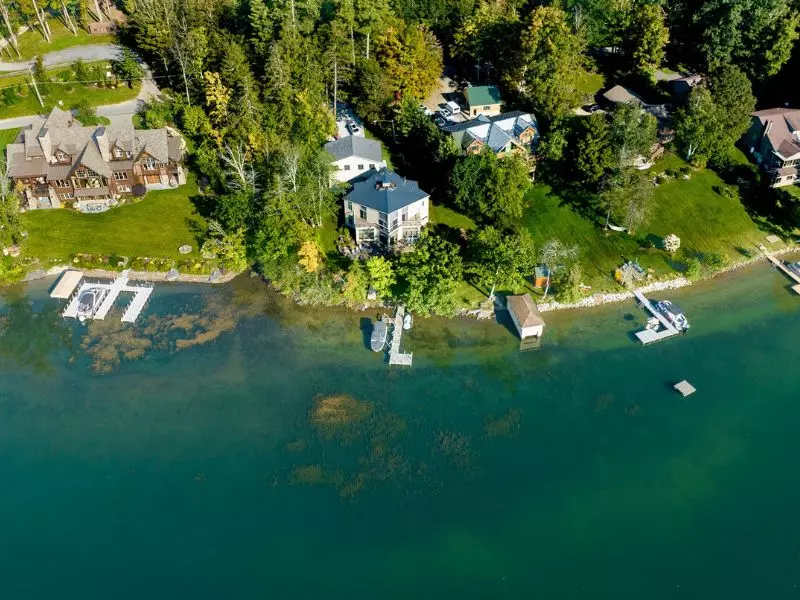Drones and water—two elements that can create some of the most captivating visuals you've ever seen.

Have you ever wondered how those breathtaking aerial drone photography shots over water are captured? You're in the right place to learn how to plan and execute a drone shoot over water. The challenges are real, but the rewards? Stunning visuals that can massively elevate your portfolio or business. This blog post aims to be your go-to guide for planning and executing a drone shoot over water without a hitch.
Why Drone Shoots Over Water Are Unique
Water has a mesmerizing effect on the camera. The way it reflects light, the ripples, and the sheer expanse can add a cinematic quality to your footage. But it's not all smooth sailing—pun intended. You've got to deal with wind conditions, water reflections, and the ever-present risk of your drone taking an unplanned dip.
Why Choose a Water Location?
Water offers a unique perspective that's hard to replicate. Whether you're in real estate capturing waterfront properties, in tourism showcasing scenic lakes, or just an avid drone photographer, water adds an element of drama and beauty to your shots.
Pre-Planning: What You Need to Know
-
Scouting the Location
Before you even think about hitting the skies, you need to know your location, like the back of your hand. Google Maps is your friend, but nothing beats an actual visit. Check for obstacles, potential take-off and landing spots, and legal restrictions. Some areas might require a permit, so better safe than sorry.
-
Legal Requirements
Flying a drone isn't a free-for-all. Make sure you're up-to-date with FAA regulations and any local laws. Some areas may require special permits, especially if they're protected habitats.
-
Weather Conditions
Wind speed and light conditions can make or break your shoot. Always check the forecast and aim for days with low winds and clear skies. Overcast conditions can also offer softer lighting, which is great for certain shots.
-
Equipment Check
Not all drones are created equal, especially regarding water shoots. Look for drones with strong wind resistance and stable flight capabilities. As for the camera, a gimbal is necessary for those smooth shots. Opt for drones that are water-resistant or have waterproof features. Always have backup batteries and perhaps even a backup drone. You don't want to be left high and dry, literally. Also, don't forget your drone's safety gear, like flotation devices—just in case!
The Planning Phase
-
Site Survey
Scouting the location is crucial. Use Google Maps for a preliminary survey and then visit the site to check for obstacles like trees, boats, or even birds that could interfere with your shoot.
-
Storyboarding
Plan your shots to avoid aimless flying. Use a storyboard to visualize the result. This will help you be more efficient with your battery life and capture the needed aerial images and videos.
-
Safety Measures
Safety first! Life vests and flotation devices aren't just for you; consider getting flotation attachments for your drone. Also, always have a first aid kit and emergency contact numbers handy.
Execution: On the Day of the Shoot
-
Safety First
Before taking off, run through a pre-flight checklist to ensure everything's in working order. This includes calibrating your drone's compass, checking battery levels, and ensuring all safety measures like return-to-home are set up.
-
Final Equipment Check
Double-check everything from your drone's battery life to the camera settings. Ensure your SD cards have enough space and that all firmware is updated.
-
The Flight Plan
Planning your flight path can save you a lot of headaches. Use drone flight planning apps to map out your route, focusing on critical shots you want to capture. Make sure you've got your take-off and landing spots marked.
-
Communication
Clear communication between the drone operator and the spotter is essential. Use walkie-talkies or headsets to keep in constant contact, ensuring you're both on the same page.
-
Launching and Landing
Choose a stable platform for take-off and landing. If you're on a boat, make sure it's anchored. The last thing you want is to lose your drone to a sudden wave.
-
Capturing the Shots
When it comes to camera settings, a slower shutter speed can add a dreamy quality to the water, while a faster one can capture crisp details. Experiment with different angles and heights to get that perfect shot. And remember, smooth, gradual movements are the name of the game. Use advanced flying modes like "Course Lock" or "Orbit" to capture stable and cinematic footage. Experiment with different altitudes and angles to get that perfect shot.
Post-Production
Editing water footage can be tricky but rewarding. Use color grading to bring out the blues and greens of the water. Software like Adobe Premiere Pro or Final Cut Pro offers extensive tools for perfecting your shots.
Conclusion
So there you have it—your complete, step-by-step guide to planning and executing a drone shoot over water. Ready to take to the skies? Contact us for professional drone shoots over water.

